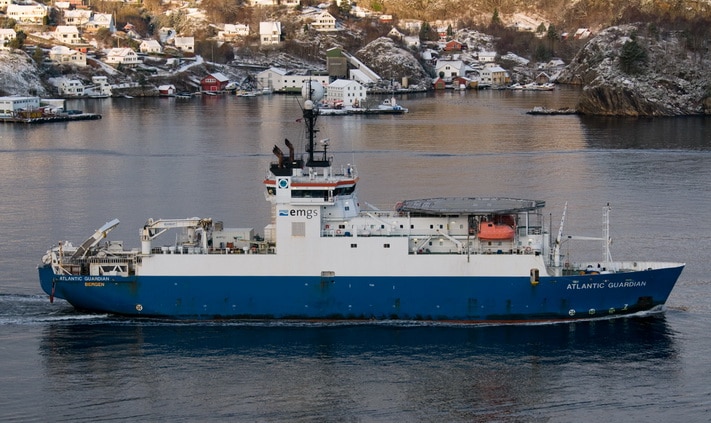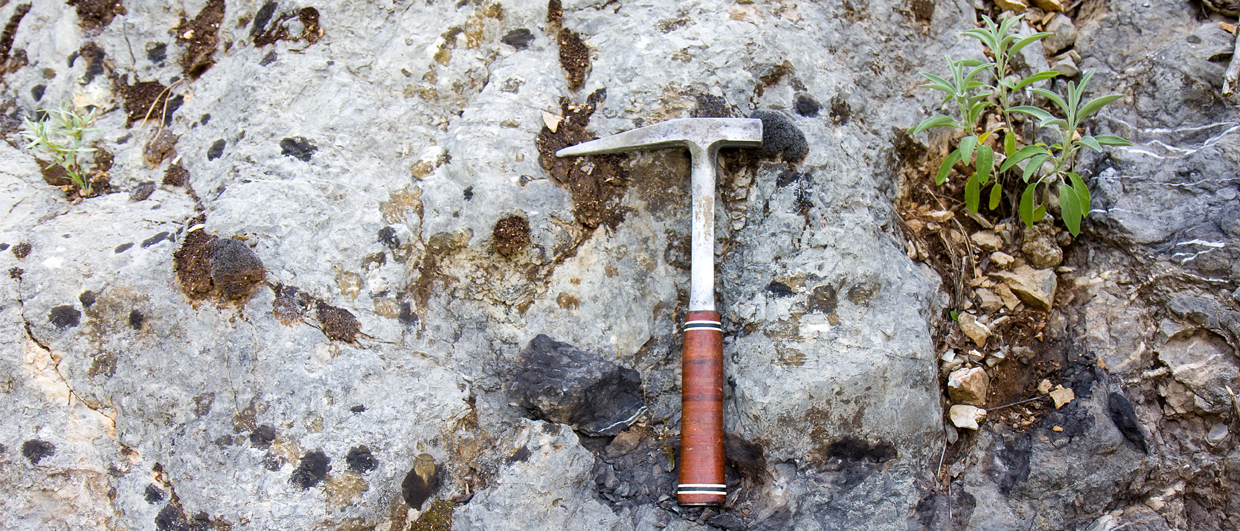Now known as Canada’s Ocean Playground, Nova Scotia is jam packed with geological vistas and has long been recognised by geologists as a showcase of Earth’s history.
Base map showing the Cobequid-Chedabucto Fault. © Jeff Poole, NSDEM.
Nova Scotia – the land of lobster, the Bluenose and Celtic music – is jam-packed with geological vistas. Now known as Canada’s Ocean Playground, Nova Scotia has long been recognized by geologists as a showcase of Earth history, its diverse terranes and formations put on full display by the relentless waves of the Atlantic and highest tides on Earth in the Bay of Fundy.
This is also the land of Mi’kmawey, with artifacts that document over 13,000 years of habitation by the Mi’kmaq. Points made of agate mounted on the tips of throwing spears (atlatl) demonstrate the Mi’kmaq harvested and used the geological resources of Nova Scotia’s coastlines. The basalt headlands and islands also hold special places in the Kluscap legends and stories of Mi’kmaw culture.
The sea arch at Clarke Head and distant view of Wasson Bluff, near Parrsboro, Nova Scotia.
The first geotourists to Nova Scotia – at least the first to write a journal about their visit – were Messrs. Jackson and Alger, who essentially did a ‘sail by’ of its coastal waters in 1828. Their journey along coastal cliffs and rocky shores resulted in the earliest published geological map of Nova Scotia. Their words were then ‘sampled’ (to the chagrin of the aforementioned gentlemen) by native son Abraham Gesner in his publication Mineralogy of Nova Scotia.
Gesner, a medical doctor, pioneering geologist and inventor of the first process to distill petroleum into kerosene, was not shy in using hyperbole when it came to descriptions of Nova Scotian geology, which sometimes set him at odds with the likes of other visiting emissaries like Sir Charles Lyell. And so began the differing opinions that are the hallmark of every good geological field trip. And many trips have followed, including the International Geological Congress in 1913, as well as countless societies and, increasingly, citizens who hunger for knowledge and to be thrilled by the pages of the ‘Big Volume’, as the cliffs of Joggins were so aptly described by Lyell.
Today, Nova Scotia is a geotourism paradise. There are many sites to see and experience, from the volcanic rocks at Cape Forchu lighthouse near Yarmouth in the south-west to the geology of the Cabot Trail on Cape Breton, the province’s northernmost point. Resources abound for the visitor to Nova Scotia’s geology, and a few are listed at the end of this article.
The Cobequid-Chedabucto Fault
The Cobequid-Chedabucto fault divides mainland Nova Scotia in two, splitting the Avalonia terrane in the north, formerly part of Laurasia and predominantly Carboniferous, from the Meguma terrane of Gondwanan affinity in the south. The Clarke Head Fault seen here is part of this complex fault system.
The reason for Nova Scotia’s geological brilliance is, of course, its history, which includes slivers of terranes that originated on distant and ancient continents and oceans that have shape-shifted into later incarnations thanks to the great power of plate tectonics. The most striking feature of its geology today is the east-west trending Cobequid-Chedabucto fault, along which oceanic sediments offshore North Africa – then Gondwana – slid by northern Nova Scotia’s ancient Avalon on its way to a collision withLaurentia (North America). This collision of Gondwana and Laurentian North America figured in the uplift of the Appalachian mountain chain.
Not only is the assembly of the great supercontinent Pangea recorded in the geoscapes of Nova Scotia, but so too is the breakup of that supercontinent some 100 million years later. The record of that event is found in the spectacular exposures of rift basin geology, the sandstones and basalts along the margins of the Minas Basin, Bay of Fundy. These basalt headlands record the largest outpouring of lava in Earth’s history, an event that has been linked to the end-Triassic mass extinction event that ushered in the reign of the dinosaurs.
A Global Geopark for Nova Scotia
Igneous rocks outcrop at Three Sisters, near Cape Chignecto Park – exploring the coastal geology of Nova Scotia by kayak is an exhilarating experience.
It is fitting given the storyline above that the north shore of the Bay of Fundy’s Minas Basin has been identified as a prime candidate for a cherished UNESCO Global Geopark destination, for it is along this shore that the story of Pangea’s assembly and later breakup is showcased perhaps better than anywhere else in the world.
At the center of the Cliffs of Fundy aspiring Global Geopark is the Fundy Geological Museum, a small community-run site that includes exhibits of the region’s minerals and fossils, including the oldest dinosaurs in Canada. The museum is a popular destination, offering guided beach tours and a new ‘Tidal Reveal Dinosaur Dig’ experience. The museum’s meeting rooms and local accommodations in Parrsboro make this area a great base camp for geological field trips, with fresh Fundy lobster for dinner, of course. For the camper, Five Islands Provincial Park provides unforgettable seascapes of the Bay of Fundy, as does Cape Chignecto Provincial Park, with hiking trails along breathtaking coastal cliffs.
Exploring life exposed at low tide – but watch for those waters returning!
The rich diversity of geoheritage sites here and across the Province of Nova Scotia has been recently compiled in Nova Scotia’s Geoheritage Sites list and map products, available online (https://novascotia.ca/natr/meb/geoheritage-resources/). It was this list that was used by local citizens of the Parrsboro shore to recognize the potential for establishing a Global Geopark in their part of Nova Scotia. The opportunity to link spectacular geological sites with unique tourism experiences and cultural destinations gives Nova Scotia a new opportunity to share this rich geoheritage with a growing global tourism community.
For those who prefer ‘hard copy’ resources, the Nova Scotia Geological Highway Map and Nova Scotia Rocks brochure are high-quality products that have been produced by the Atlantic Geoscience Society. Geology of Nova Scotia by Sandra Barr and Martha Hickman Hild (Boulder Press) is another excellent guide to some of the province’s geological ‘gems’. With these in hand, the Geoheritage StoryMap on your device, and taking note of the tide times, Nova Scotia’s seascapes and geological wonders await you. In places like Advocate Harbour, it’s possible to explore the coastal geology by sea kayak – an experience like no other.
The World’s Highest Tides
Joggins Fossil Cliffs World Heritage Site.
The world’s highest tides are recorded along the shores of the Bay of Fundy at Burntcoat Head Park, reaching over 16m or 52 feet! These powerful tides create ever-changing vistas that include expansive sand and mud flats important for migrating shorebirds, as well as sharp basalt headlands that offer no place to stand at high tide: be sure to always consult tide tables during your travels. In some places, the tide approaches so fast that it can surprise you and leave your return route under water.
Every day, twice a day, the Bay of Fundy tides carve a fresh exposure of the Carboniferous and Mesozoic rift basin geology that line its shores. It is this relentless erosion that produces new fossil discoveries, including the fossil ‘forests of Joggins’, and the oldest dinosaurs in Canada.
The upright fossil trees of the ‘Coal Age’, long ago made famous by the ongoing discovery of the world’s oldest reptiles and other creatures, are the hallmark of the Joggins Fossil Cliffs UNESCO World Heritage Site. A delightful interpretive center and museum, and a variety of guided tours of the cliffs, invite the visitor to follow in the footsteps of the ‘giants of geology’ and to make their own discoveries of life 300 million years ago.
Rift Basin Field Trips
Basalts and rift strata at Old Wife point, Five Islands Provincial Park. It was along the shore at Five Islands Provincial Park that Derek Armstrong, a geologist on vacation from Ontario, saw a dinosaur footprint exposed by a recent rockfall. Fossils are protected in Nova Scotia by legislation, and can only be collected by those with a Heritage Research Permit. Derek notified the Fundy Geological Museum and the fossil was collected by Museum staff.
The coastal exposures of the Bay of Fundy are excellent sites for academic, professional or conference field trips. The rift basin sedimentation and tectonic structures clearly visible in the daily refreshed outcrops of the Fundy shore provide real world ground-truthing that is vital to the interpretation of seismic profiles. A popular destination for such field trips is the ‘Old Wife’, at Five Islands Provincial Park. The dramatic faulting and stratigraphic relationships between rift basin sedimentary rocks and basalt flows are both easily accessible and never to be forgotten.
You’re Invited!
Whether you are looking for a stellar field trip destination, or a place to quietly explore while peregrine falcons and bald eagles soar overhead, Nova Scotia and the Bay of Fundy cliffs are calling to you.
More Information & Resources
Fundy Geological Museum
Burntcoat Head Park
Joggins Fossil Cliffs World Heritage Site
Cliffs of Fundy Geopark
Nova Scotia Provincial Parks
Tourism Nova Scotia
Nova Scotia Geoheritage





